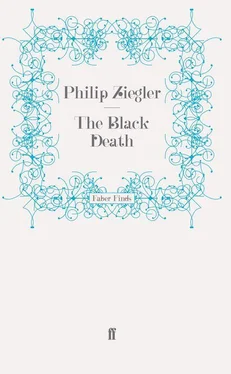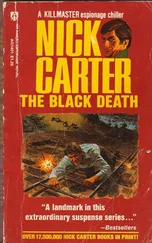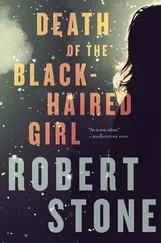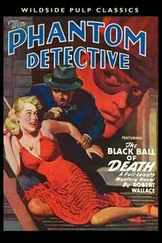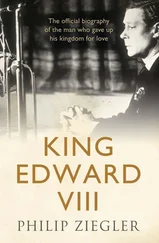But if one were called on to identify the hall-mark of the years which followed the Black Death, it would be that of a neurotic and all-pervading gloom. ‘Seldom in the course of the Middle Ages has so much been written concerning the miseria of human beings and human life’, wrote Hans Baron, going on to refer to ‘…the pessimism and renunciation of life which took possession of mankind in the period following the terrible epidemics in the middle of the fourteenth century.’ {526} It was a gloom which fed upon extreme uncertainty and apprehension. The European of this period lived in constant anticipation of disaster. The apparition of Antichrist was announced many times and in many places. Floods, famines, fire from heaven were perpetually around the corner. The Turks and Saracens planned a descent on Italy; the English on France; the Scots on England. Medieval man, in sober fact, had more than enough to worry about. Now his imagination ran riot.
Perhaps the factor which contributed most towards his demoralization was his almost total ignorance of the workings of his world. Severe though the limitations may be on modern man’s ability to control his destiny he now has a rudimentary understanding of the way in which the forces which dominate him achieve their irresistible effect. Once a danger is understood then half its terrors are gone. From the tiny patch of fitful light which played within the circle of their comprehension our forefathers stared aghast into the darkness. Strange shapes were moving, but what they were they did not know and hardly dared to speculate; strange sounds were heard but who could say from where they came? Everything was mysterious, everything potentially dangerous; to stay still might be perilous, to move fatal. The debauchery and intemperance of which we have spoken was the protective device of frightened men who drank to keep their spirits up, who whistled in the dark. And yet their frenetic gaiety only served to accentuate the gloom that lay underneath. ‘Eat, drink and be merry, for tomorrow we die’; but tomorrow seemed very close and the food and drink could never subdue for long the fear of death.
‘Psychologists and sociologists’, wrote Mollaret, {527} ‘know that man reacts to violent pain by flight, by violence or by sublimation. The plague stirred up these three reactions. Flight took the form of a stampede towards altars and processions; doctors and quacks; workers of miracles and visionaries. Violence found its outlet in the massacre of the Jews or those believed to have spread the plague, in the hysteria of the Flagellants, often in suicide. Sublimation was the works of the arists…’
It is above all in the works of the artist that the mood of the age finds its most vivid expression. The favourite themes were those of suffering and of retribution; Christ’s passion or the tortures of hell. Orcagna’s great fresco, the ‘Triumph of Death’ in the church of Santa Croce in Florence, painted immediately after the Black Death though not necessarily directly inspired by it, sets the pattern. {528} In this lugubrious composition a king and queen are hunting with their suite. They turn a corner and see three open graves before them. Each one contains a corpse; all worm-eaten, one blackened, one covered with snakes, one with belly distended, all wearing crowns. Golden lads and girls all must, as chimney sweepers come to dust. The king, it is clear from his expression, has not failed to draw the proper moral. To the left a party of gay debauchees are holding an alfresco feast and giving every sign of thoroughly enjoying themselves. They do not notice Death, a clawed harpy, preparing to swoop upon them. To the right the lepers and the blind, the halt and the lame plead to be relieved of their sufferings. Death ignores them. Another moral: Death prefers to pick his victims from those who wish to live. Unsubtle, didactic, but terrifying in its force and in its revelation of the fear and hopeless pessimism that occupied the mind of the painter and of his public.
It was characteristic of the age that Christ should often be portrayed as an angry and minatory figure; that Death should be personified in a higher proportion of paintings than before or after, that the cult of St Sebastian should become fashionable, that the story of Job should appear almost for the first time in Tuscan panels and frescoes. In pictures of the Virgin dating from before the plague she is often seen protecting monks and nuns from the wrath of God; significantly, after the plague, her mantle is extended to cover all Christian beings as well. {529} Mankind, it is clear, could do with all the protection it could get.
It would be wrong to suggest that the Black Death was solely and directly responsible for the metamorphosis. ‘In the thirteenth century’, wrote Émile Mâle, {530} ‘all the inspiring aspects of Christianity are reflected in art – kindness, humanity, love…. In the fifteenth century this light from heaven has long ceased to shine. Most of the works from this period… are sombre and tragic. Art offers only a representation of grief and of death.’ Yet Mâle saw this evolution at its most rapid in the last quarter of the fourteenth century, the fruit not of the plague itself but of the great wave of terror and dismay which engulfed Europe even after the plague was passed. Whatever the exact timing, however, the mood of the age pervades its religious art and the explanation of that mood forces itself upon the historian.
In a relatively primitive society religion and magic are seldom far apart; the shadow of the sorcerer lurks in the churchyard, the relics of the saints and the bones of the witch doctor’s mumbo-jumbo provide alike a picturesque pendant to an inner mystery. The terrors of the Black Death drove man to seek a more intense, a more personal relationship with the God who thus scourged him, it led him out of the formal paths of establishment religion and, by only a short remove, tumbled him into the darkest pit of Satanism. The Europeans of the 1350s and 1360s were no more saints or devils than their ancestors but such emotional disturbance had been generated that they were often within a step of believing themselves one or the other. They had been tested to the uttermost and even a touch was henceforth enough to tip them from their precarious balance. For anyone who had lived through the Black Deaths hysteria could never be far away.
* * *
We have already referred to Mr Thompson’s analogy between the after-effects of the Black Death and the Great War of 1914–18. {531} In both cases, he says, complaints of contemporaries were the same: ‘economic chaos, social unrest, high prices, profiteering, depravation of morals, lack of production, industrial indolence, frenetic gaiety, wild expenditure, luxury, debauchery, social and religious hysteria, greed, avarice, maladministration, decay of manners.’ In both the immense loss of life and ‘psychophysical shock’ made it a long time before the vitality and the initiative of the survivors was regained. In both the ‘texture of society’ was modified; new openings were created; the old nobility largely passed away and parvenu upstarts took their place; chivalry and courtesy vanished, manners became uncouth and brutal, refinement in dress disappeared. In both the administrative machine and the Church were almost crippled. Thousands of ignorant, incompetent, dishonest men were thrust abruptly into positions of authority far beyond their merit. In both, in a word, the whole population was ‘shell-shocked’, a state from which they were not fully to emerge for many years.
There is, of course, much which is exaggerated or unacceptable in this thesis. Neither after 1918 nor after 1350 did the ‘old nobility’ pass away; chivalry and courtesy did not vanish; dress and manners evolved, perhaps more dramatically than usual, but certainly not with the drastic absoluteness suggested by Thompson. But the analogy is still of value in that it conveys an impression, expressed in contemporary terms, of the magnitude of the experience in which medieval man had been involved. The two experiences are properly comparable but comparison can only show how much more devastating the Black Death was for its victims than the Great War for their descendants. Their chances of death were of course immeasurably higher; even the front-line infantry man had a better chance of surviving the war than the medieval peasant the plague. Another distinction perhaps even more important for the morale of those involved, was the omnipresence of the Black Death. The First World War was more or less confined to contending armies on fixed battle lines; the second cast its net more widely but still left great areas virtually untouched. The Black Death was everywhere; in every hamlet and in every home. No escape was possible.
Читать дальше
